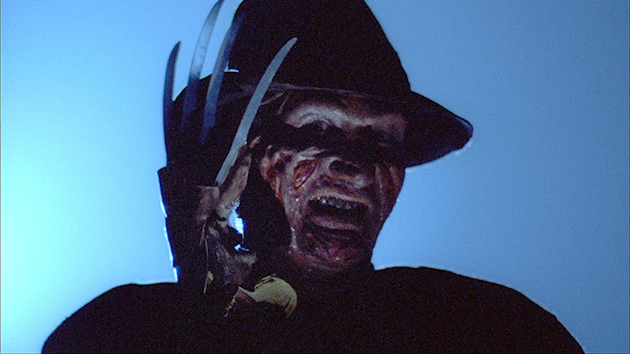How the Horror Director Stayed Vital Through Three Decades of Scary Movies
Genre film lost one of its icons over the weekend with the passing of Wes Craven at the age of 76. Craven didn't limit himself to horror — he directed Meryl Streep in the inspirational Music of the Heart and made the thriller Red Eye with Rachel McAdams and Cillian Murphy — but he was best known for scary movies that left a big mark on Hollywood. Craven has plenty of worthwhile films on his resume, but he made three megahits in three different decades, each of which by itself could have been a career-defining moment. Fortunately for moviegoers, Craven was intent on reinventing himself instead of simply working the same material over and over.

Last House on the Left (1972)
Championed by Roger Ebert as "a tough, bitter little sleeper of a movie," Last House on the Left was written and directed by Craven and shot in 1971 on a budget of about $90,000. A grindhouse-style thriller with grueling scenes of sexual violence and a graphic revenge plot, it was actually (and improbably!) inspired by an Ingmar Bergman film, The Virgin Spring. That mix of the arthouse and the grindhouse was key to Craven's sensibility. He held a master's degree in philosophy and writing from Johns Hopkins University and was a college professor before he became a filmmaker. Quite difficult to watch and subject to censorship in many countries, Last House on the Left nonetheless set a high bar for exploitation films that its numerous brutal imitators failed to clear.

A Nightmare on Elm Street (1984)
Craven worked with the template created by John Carpenter in Halloween — a basically realistic portrait of the American suburbs, with a murderous interloper — but pushed it further. Working with a budget of between $1.1 million and $1.8 million (depending on which source you believe), Craven told the story of a killer who stalks his victims and strikes in their dreams, rather than in the bigger world outside. Blurring the distinction between dreams and reality put a creepy spin on the slasher tale. Craven gave Johnny Depp his first screen role in this film and, of course, Robert Englund's performance as the genuinely nasty Freddy Krueger proved iconic.

Scream (1996)
Of all the Elm Street sequels, the only one directed by Craven — 1994's Wes Craven's New Nightmare — is by far the best. Its playful take on the film series (Craven appears on-screen as himself) reads now as a trial run for the massively successful Scream franchise. Scream was actually written by Kevin Williamson, but the material was right in Craven's wheelhouse. He had made a career out of turning the horror genre inside out, and Scream promised to require a deft balancing act between a funny teen comedy and a scary slasher movie. In Craven's hands, it worked. Scream generated huge box-office results and set a template for a new generation of snarky, self-aware youth-oriented horror to follow (including an MTV series of the same title that has its first season finale tomorrow night).
Out of all his contemporaries in the genre — George Romero, John Carpenter, David Cronenberg, and more — only Craven managed to remain a hugely successful force at the mainstream box office in the 1990s and beyond. His last film as director, Scream 4, was released in 2011. Horror fans will miss him badly.
Topics: Blog Films and Filmmakers wes craven
Did you enjoy this article? Sign up to receive the StudioDaily Fix eletter containing the latest stories, including news, videos, interviews, reviews and more.

Leave a Reply